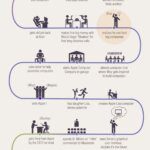It’s hard to get reliable information on what’s happening in China, so this post comes with a bit of a disclaimer. I’m not sufficiently familiar with the source, ChinaWorker.info, to vouch for it. A figure of 96% aggrieved about inequality seems high, but then again the New York Times cites it too. And I am familiar with some of the data: the number of ‘mass incidents’ in China last year sounds about right – a quarter of a million protests. It seems like China’s well on its way to A Million Mutinies Now.
“There has been an increasing number of mass disturbances occurring in recent years related to the yawning gap between the rich and the poor.” This warning, issued by Yan Ye, vice-professor of the North China Institute of Science and Technology, has made headlines in the state-run media. A number of recent surveys in China point in the same direction. Rapid economic growth which recently saw China overtake Germany as the world’s largest merchandise exporter, has not benefited large sections of the population. Yan’s warning was based on research conducted by the top government think tank, the Chinese Academy of Social Sciences (CASS), into six cases of mass disturbances that broke out in 2008, including the Weng’an incident in Guizhou province, the Sanlu tainted milk scandal and taxi drivers’ strike in Chongqing municipality.
Unequal income among different sectors of the economy topped the reasons behind the threat to the country’s social stability, according to Yan’s research report in the book titled Social Structure of Contemporary China, released last week. The government should strengthen supervision to control “a number of senior managers’ high incomes in monopolistic industries”, Yan said.
“Governmental supervision can influence state-owned enterprises’ policies on protecting employees, but there is no similar supervision mechanism for the increasing number of private enterprises in China,” Lu Xueyi of the Chinese Academy of Social Sciences, told China Daily. “The government needs to, on the one hand, ensure the functioning of market economy, and to promote a just and harmonious society on the other,” said Lu, reflecting a stereotypical view within official circles of what the government should be doing.
The CASS report did not provide figures over the number of ‘mass incidents’ (street protests, strikes and other collective actions), but the trend is evidently upwards. Recorded ‘mass incidents’ were 120,000 in 2008, up from 90,000 in 2006. These statistics are highly sensitive for the regime and therefore since 2007 no official statistics have been published, but some estimates say the tally for 2009 could be 230,000.
In the absence of democratic rights, independent trade unions and other grassroots organisations, with workers and other oppressed groups unable – legally – to fightback against abysmal wages and conditions, then official research institutions such as CASS play the role of an early warning system – to alert China’s one-party dictatorship over potential threats to its tenure. The question is to what extent the ‘communist’ regime is capable of acting upon these warnings – of which there are many – once received.
“China currently continues to be stuck in a phase of frequent conflicts. Social unrest has been on the rise compared to last year,” warned Chen Guangjin, a co-author of the report. “Six of the 10 top environmental protection incidents that have happened in China since 2001 took place in 2009,” Chen said.
In a separate press release, a top agriculture expert Li Xiaoyun said the number of people in China defined as poor would at least triple if not for the use of an antiquated official poverty line. China’s poor actually totals 150 million, if using the internationally accepted 1 US dollar per day guideline, Li said, not the 40 million claimed by the government. Even 150m is an underestimate of the real level of poverty in China. Li estimated that about 20 to 30 percent of the rural population – 140 million to 230 million people – is vulnerable to being driven back to poverty due to sudden sickness, natural disaster or economic recession. He urged the government to set up a social safety net to enhance the immunity to poverty among farmers. Very few of China’s rural population are covered by pension provision and the majority cannot afford to visit a hospital in the event of illness.
In yet another report that makes grim reading for China’s rulers, the Zhejiang Academy of Social Sciences found that 96 percent of respondents now feel resentment towards the rich. The report also found that 70 per cent felt there was “a big gap” between the rich and poor in China today.
“I believe that the wealth gap is a much more serious problem nationwide (than hitherto believed),” said Qiu Liping, a professor of social stratification at Shanghai University. The state-run China Daily quoted a Shanghai magazine editor who complained that her red Porsche had been vandalised three times in two weeks. Her friend’s Lamborghini had fared no better. “I think there are many people in this city who harbour a deep resentment against the rich,” she told the newspaper.
This simmering class hatred presents enormous problems for the Chinese regime and the wealth gap shows no signs of narrowing. The country is currently also in the grip of a property bubble which the authorities are trying to bring under control with new measures to curb bank loans and reduce speculative sales. Sales in the luxury end of the market in cities such as Beijing and Shanghai have broken all records in recent months. But yet another CASS report found that 80 percent of urban residents cannot afford to buy homes. For many, the growth of an ostentatious super-rich elite is directly linked to the antics of the ruling party. A now famous report over the wealthiest Chinese – those holding in excess of 100 million yuan ($20.3 million) – found that 91 percent of them were children of ‘communist’ officials.
And corruption is seen as the biggest blot on China’s international image, according to a December poll by the Horizon Research Consultancy Group. 60 percent of its respondents in five major cities – Beijing, Shanghai, Guangzhou, Wuhan and Chongqing – think corruption among government officials is the most serious issue.
These surveys confirm what socialists, as well as other workers and farmers in China, know from their own experience. Far from spreading Confucian “harmony” between the classes, the pro-rich policies of the Chinese regime are preparing a social and political explosion. This has been delayed to some extent by the maintenance of high growth, although this is now based on unprecedented levels of bank credit and is ultimately unsustainable. This type of economic development, while it excludes the poor, can give the appearance of a way out, or of some improvements in the future. But based on the present economic course, mass unrest is set to increase dramatically as the latest surveys confirm. This in turn could lead to the development of workers’ organisations and a movement towards trade unions – the only force that can offer an alternative.
written by Raj Patel of rajpatel.org





























